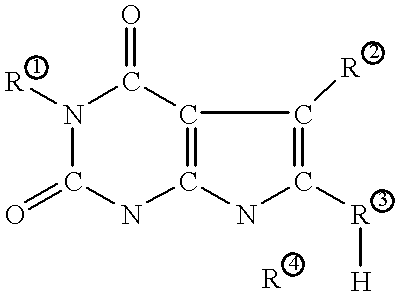Pleasantly fragrant process for stabilizing halogen-containing polymers
a technology of halogen-containing polymers and stabilizing processes, which is applied in the direction of organic chemistry, chemical apparatus and processes, group 4/14 element organic compounds, etc., can solve the problems of offending odor, physical properties and normal heat-induced deterioration of halogen-containing polymers
- Summary
- Abstract
- Description
- Claims
- Application Information
AI Technical Summary
Benefits of technology
Problems solved by technology
Method used
Image
Examples
example 1
A mixture of 1301.9 grams (10 moles) of heptanoic acid, 1328.3 grams (17 moles) of 2-mercaptoethanol and 13.02 grams of ptoluene sulfonic acid was held at 100° C. in a 5-liter, 3-necked round bottom flask equipped with a magnetic sing bar as the pressure was reduced gradually over a period of4.5 hours to 50 mm Hg. The temperature was raised to 125° C. and the pressure was reduced to less than 10 mm Hg for 0.5 hour and then the product was distilled at 125°, less than 10 mm Hg to obtain an ester having a mercapto sulfur content of 17.38%. Theoretical value for 2-mercaptoethyl heptanoate: 17.38%.
A mixture of 539.19 grams (a 2% excess; 2.83 equivalents) of the product and 1010 grams of water is cooled and stirred as 227 grams of concentrated ammonium hydroxide and 212.12 grams (2.27 equivalents) of a 30% by weight solution of sodium hydrosulfide are added at a temperature below 20° C. A mixture of organotin chlorides containing 20.35% mono-methyltin trichloride and 79.65% di-methyltin ...
example 3
To a stirred mixture of 218.70 grams (a 2% excess; 1.06 equivalents) of mercaptoethyl a heptanoate (made by the general procedure of Example 1), 350 grams of water, 20 grams of isopropyl alcohol, and 77.47 grams (0.83 equivalent) of a 30% by weight aqueous solution of isodium hydrosulfide at a temperature below 40° C. there was added 89.55 grams of concentrated ammonium hydroxide and 345.72 grams (1.89 eq) of an aqueous organotin chloride solution containing 88.8% mono-methyltin trichloride and 11.2% di-methyltin dichloride (% total chlorine=19.38) at a pH of 7.2. After 20 minutes the liquid was separated and the lower, organic layer was stripped at 100° C. at less than 5 mm Hg and filtered to yield 304.9 grams of the desired mixture of organotin mercaptoheptanoate and organotin mercaptoheptanoate sulfide wherein the ratio of sulfided heptanoate to un-sulfided heptanoate is 45:55.
example 4
Preparation of Organotin Mercaptoalkyl Nonanoate and Sulfide thereof
Mercaptoethyl nonanoate was made according to the general procedure used in Example 1 to make the heptanoate and it was sulfided according to the general procedure of Example 3 except for the use of 73.11 grams (0.28 eq) of the nonanoate, 100 grams of water, 21.00 grams (0.23 eq) of sodium hydrosulfide, 22.48 grams of ammonium hydroxide, and 105.21 grams (0.50 eq) of an organotin chloride containing 20.71% mono-methyltin trichloride and 79.29% di-methyltin dichloride (% total chlorine=16.85). The ratio of sulfided nonanoate to un-sulfided nonanoate is 45:55.
PUM
 Login to View More
Login to View More Abstract
Description
Claims
Application Information
 Login to View More
Login to View More - R&D
- Intellectual Property
- Life Sciences
- Materials
- Tech Scout
- Unparalleled Data Quality
- Higher Quality Content
- 60% Fewer Hallucinations
Browse by: Latest US Patents, China's latest patents, Technical Efficacy Thesaurus, Application Domain, Technology Topic, Popular Technical Reports.
© 2025 PatSnap. All rights reserved.Legal|Privacy policy|Modern Slavery Act Transparency Statement|Sitemap|About US| Contact US: help@patsnap.com

